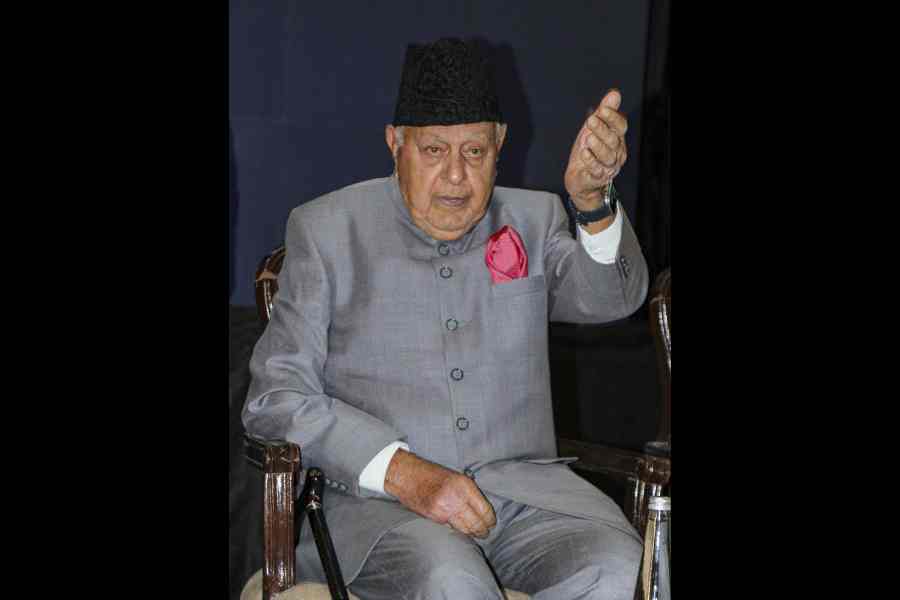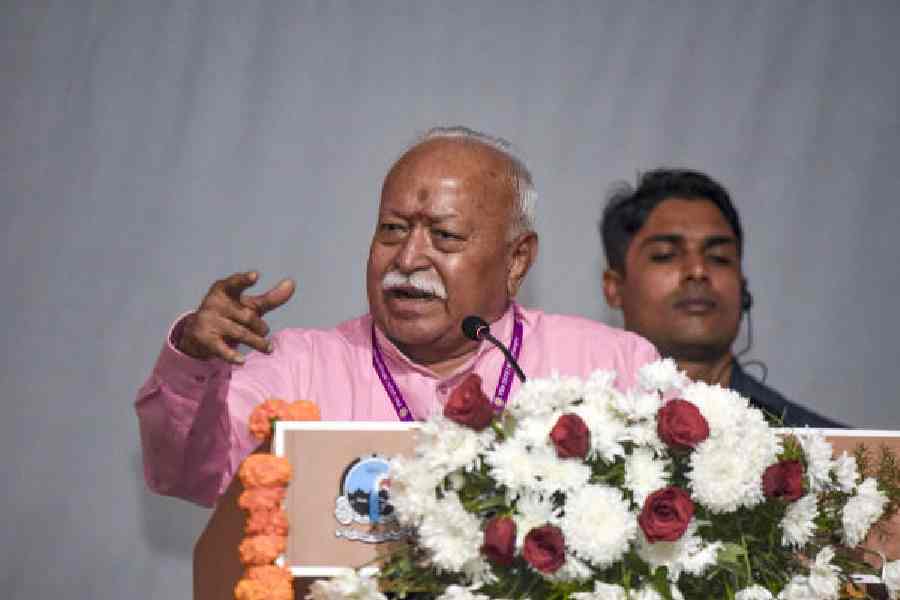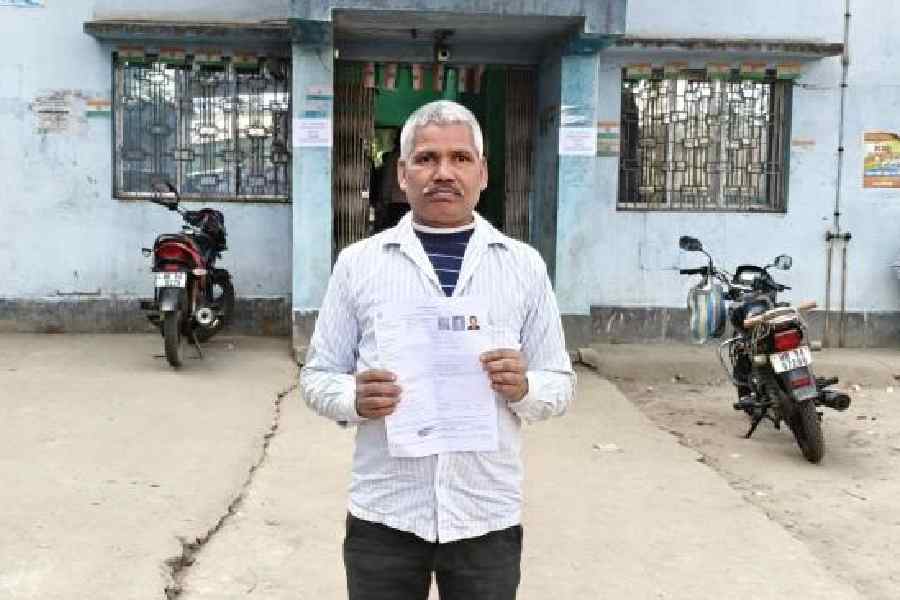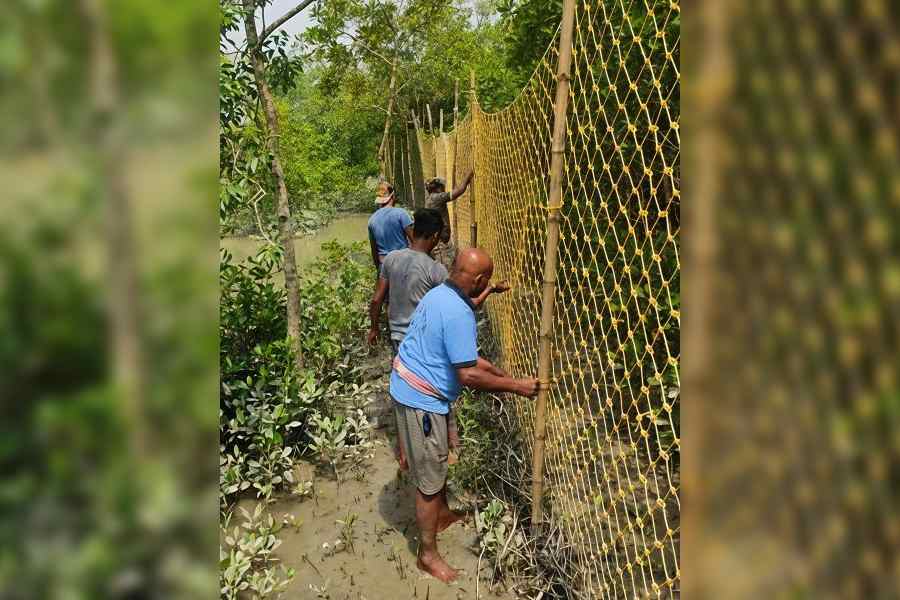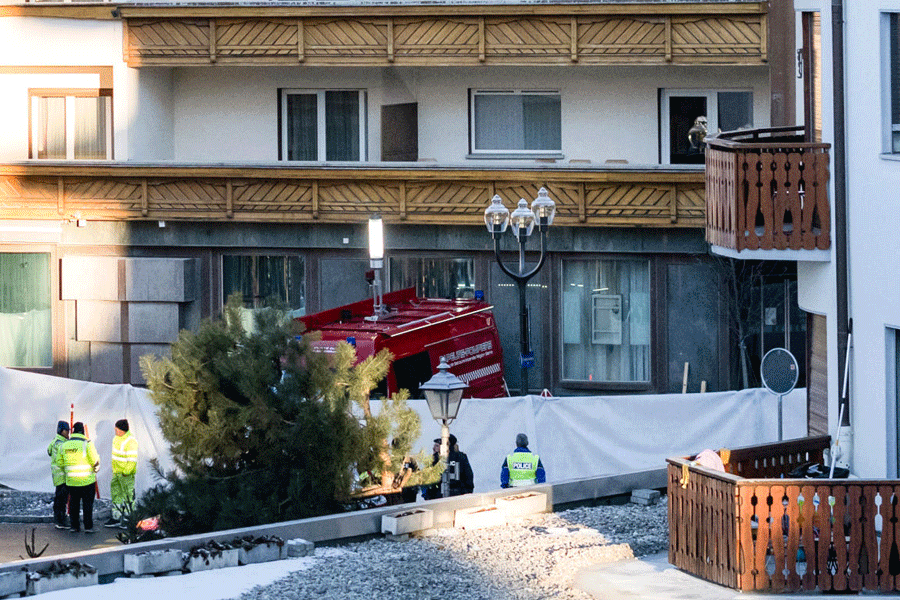-

WORTH EMULATING: Spooks too want friendly exchanges
What do spymasters of nuclear-armed neighbours gorge on when they meet in a third country to discuss bilateral problems? Steaks and drinks were definitely served when A.K. Verma, then Research & Analysis Wing (RAW) chief, met his Inter-Services Intelligence (ISI) counterpart Hamid Gul in Interlaken — also the backdrop of many Yash Chopra blockbusters. Their cronies, however, refuse to reveal details about the steaks and drinks, insisting that the truth can hurt religious sentiments on both sides of the Wagah border.
The 1988 Gul-Verma tryst — authorised by their respective bosses — was a one-off rendezvous with a specific agenda, according to Pakistani security analyst Ayesha Siddiqa. But, now, there is a startling new demand that the chiefs of RAW and ISI sit across the table at regular intervals and pick each other's brains. There is also a proposal to set up a 'direct channel' between the two agencies. These unprecedented steps were mooted by retired intelligence chiefs of India and Pakistan at a brainstorming session organised in October by Ottawa University, Canada. The papers of the seminar were released in December.
The participants at the Track II dialogue chaired by Canadian scholar Peter Jones included C.D. Sahay, A.S. Dulat, A.K. Doval, R.N. Ravi, Wajahat Latif, Shaukat Javed, Sallahuddin Satti and Sikandar Afzal — the elder statesmen of Indo-Pak intelligence community who may have hung up their boots but are on good terms with the current top brass they once mentored and moulded.
At one level, their key recommendation — regular discussions between serving RAW and ISI chiefs — sounds preposterous because the agencies they lead stand accused of unleashing mayhem in each other's country. While ISI is a byword for subversion in India and its footprints are visible from Kashmir to Kerala, RAW is blamed for the festering Baluch insurgency, the 2009 attack on the Sri Lankan cricket team in Lahore, the raid on ISI's Sukkur headquarters last year and countless blasts from Peshawar to Karachi.
But Sahay and Latif, who headed RAW and the Federal Investigation Agency (FIA) respectively, shrugged off these charges. Instead, they vehemently argued for direct interaction between the ISI and RAW in a joint paper presented in Ottawa entitled 'Role of Intelligence and Security Chiefs in Crisis Situations'.
The authors lament the absence of an 'institutionalised channel of communication between ISI and RAW or between the internal agencies right since Independence', sarcastically noting that the 'two armies, which have generally been in hostile deployment for decades, have had no problem in maintaining hotlines and other forms of contact — while the two premier intelligence services don't have any'.
They pointed out that the RAW and ISI heads did have occasional meetings with varying degrees of success. But they wondered why such meetings had not become a regular affair. 'Intelligence services could pave the way for political dialogue. It cannot harm anyone and may even help. If the governments concerned are not in a position to embark upon a 'peace process' owing to political constraints, they may ask their premier agencies to establish links. By the time the environment has become favourable, the secret channel would have prepared the ground, identified contacts, and may even recommend an out-of-the-box approach. If war is not a serious option, dialogue — away from the public glare and, therefore, under less pressure — makes plenty of sense.'
The gist of their argument is — 'what covert agencies can achieve is not at times even conceivable in political or diplomatic channels'. And according to them, regular interaction between the ISI and RAW heads has been thwarted by the 'lack of political vision and a degree of lack of self-confidence at every level' in India and Pakistan.
Another paper presented in Ottawa, entitled 'Kashmir: Confrontation to Cooperation', essayed by Asad Durrani who headed the ISI from 1990 to 1992 and A.S. Dulat, the RAW chief from 1999 to 2000, also advocated collaboration between the spy agencies. But the authors gave away what they called a 'less known' reason for India avoiding a war with Pakistan.
'An all-out conventional war between the two countries is very likely to end in a strategic impasse. Since countries do not normally start wars without a reasonable chance of achieving a major objective, during the last three decades India and Pakistan have not taken their conflicts beyond a build-up on the borders and skirmishes across the LoC. India could still have taken the war path but for a few restraining factors. It would have removed all constraints on Pakistan to support the insurgency in Kashmir, which could then become more intense and durable. More importantly, if the war did end without causing major damage to Pakistan, it would have deprived India of a potent card that it had so far used to good effect: the threat of war.'
Former IB special director and Ottawa participant Ravi stressed that as war was not an option and peace was desirable, 'it's absolutely necessary that intelligence heads meet face to face, compare notes and address each other's concerns.' He, however, added that such meetings — unlike, say, India-Pakistan foreign secretaries' talks — could not be publicised. 'Spymasters don't bask in the limelight — please don't expect them to issue a press release when they finish talking! Deniability is a prerequisite of any interaction between secret services at any level.'
Predictably, the proposals haven't gone down well with career diplomats. The Ottawa recommendations have, in fact, raised their hackles.
'It's ridiculous — elements in the security establishment are trying to punch way above their weight,' a former foreign secretary remarked. 'The RAW's and IB's roles are well defined. What they are now seeking is beyond their mandate. On some occasions, intelligence heads were despatched by the political leadership to meet their Pakistani counterparts and report back. But you can't give them a blank cheque — a carte blanche — to set up clandestine meetings as and when they like, particularly when the prime minister, foreign minister and foreign secretary directly monitor Pakistan.'
For the record, the RAW chief is like a mini foreign secretary. His men are posted under cover in almost every Indian diplomatic mission barring a few in Africa and Latin America, disguised as a minister, counsellor, first secretary, section officer and below. They do a very specialised job, often at grave personal risk, but diplomats love to run them down. IFS officers never tire of claiming that some of the finest intelligence from Pakistan, Bangladesh, Nepal or China is whispered into the high commissioner's or ambassador's ears bypassing the RAW. Their logic is: even those betraying their country don't trust spies.
Former RAW special director Amar Bhushan, who penned Escape to Nowhere, a gripping novel about Rabinder Singh's defection to the US, murmured: 'The Ottawa proposals are like old wine in new bottle; I'm privy to earlier attempts to kick-start the RAW-ISI dialogue. I am not too sure if the ISI and RAW will ever be allowed to interact independently. But I personally believe that if the chiefs enjoy a rapport, foot soldiers of the two agencies will be certainly spared the harassment they are subjected to daily, particularly in Pakistan where ISI sometimes breaks into their homes.'


